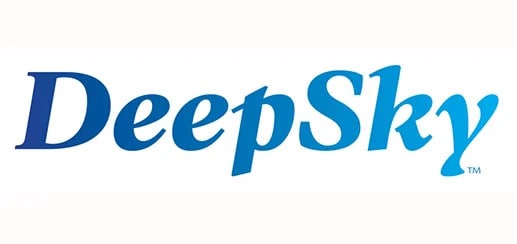The term “supply chain crisis” has become more common in the logistics world over the past few years. Many claims have been made that the ever-expanding geography of business, coupled with global resource and personnel challenges, have brought us to a state of congestion and panic.
Challenges range from labor shortages and rising costs to the complexity of managing delivery systems and addressing disconnected customer expectations. While there certainly are challenges to overcome, understanding the most effective freight delivery system for your business can make a huge difference in your logistical success.
For this reason, it’s important to understand the difference between two of the more common freight delivery methods used today; zone skipping versus distributed inventory.
The Power of Zone Skipping
When it comes to shipping high-volume quantities of product to a broad area with multiple destinations, doing so efficiently is a priority. This aspect of your business can make or break relationships and impact the bottom line. Knowing the best approach to take, the various available options, and the services that are compatible with your supply chain will all factor into which form of freight delivery you choose for your business.
As a byproduct of tremendous expansion over the past several decades, freight and parcel shippers now employ increasingly sophisticated logistics networks. As with any other business expense, rising transportation expenses are often passed on to consumers. This makes using the right delivery method even more important.
For this reason, zone skipping has become more prevalent recently. Consolidating package or freight loads across different regions and holding them at a local destination is what’s known as “zone skipping,” and it’s a type of freight consolidation that more and more brands are taking advantage of. If the company ships inside a single region, rather than across many zones, it can save money on freight by taking advantage of a lower regional rate all going through a single, central facility.
How Does Zone Skipping Work?
Zone skipping can be either handled through another service that facilitates zone skipping (these are usually technology driven shipping software providers), or independently through a shipping carrier. There are multiple companies that offer the service to assist in zone skipping. When using a zone skipping facilitator company, they will provide you with the ship from address, and their software will link to your warehouse management system (WMS) or transportation management system (TMS), directing packages with the necessary characteristics to the appropriate zone for shipping.
When using one of these services, typically the process will start with skipping 1-2 zones, after which point further skipping may be done as it is warranted. Furthermore, typically you would purchase the ground rate (4-8 day transit time at the lower zone 2-3 cost) – and it will take a day to transport the packages to the facility in the lower zone where the packages would move along at the purchased service transit time (which, in a zone 2-3, could be 1-3 days).
Theoretically, this can even improve transit times in additional to decreasing costs. For a company that is centrally located, zone skipping can serve to eliminate the need to split locate inventory, rendering a distributed inventory unnecessary.
However, if you are large enough, there is the possibility of handling zone skipping directly through each carrier. The carriers have specific volumes that need to be in place, but the process is very similar to the above-mentioned strategies using a zone skipping facilitator.
As the spokes on a bicycle tire are supported by a central hub, zone skipping enables shippers to distribute a large quantity of freight to a variety of consumers located throughout a specific region. Zone skipping reduces the stress on less-than-truckload (LTL) freight and package carriers and expedites delivery by bringing things as close as possible to their eventual destination. A fulfillment center sorts orders according to their final destination before handing them over to the carrier.
The question is, does zone skipping make sense for your business? To determine that, it would help to understand the common alternative, distributed inventory.
The Logic of Distributed Inventory
Where zone skipping follows the logic of holding inventory at the central hub, distributed inventory elects rather to split freight up across the various spoke-ends of the distribution network. In this strategy, the distribution of goods is stored in and shipped from numerous fulfillment centers or warehouses located in distinct geographic locations.
The logic of distributed inventory is that when an order is placed under a distribution inventory management model, the warehouse or fulfillment center that is closest to that customer or facility will prepare and dispatch the order.
Arguments for distributed inventory include decreased shipping costs and reduced shipping time. Due to proximity, local logistics warehouses can keep stock on hand enough to meet the needs of their expected local market, reducing waste and the associated costs of holding too much inventory in one location.
This model has benefited many of us who happily receive our orders from Amazon within a day or two, thanks to the vast network of storage warehouses that they have developed throughout the country.
According to supplychaintoday.com, Amazon has successfully created a fast-delivery infrastructure thanks to a large network of fulfillment centers, the use of many transportation modes, the integration of technology, and efficient partnerships with local fulfillment partners.
This model works for many businesses, especially when they value increased order fulfillment capacity, better inventory control, reduced damage and loss, and easier reverse logistics. That being said, it may not be the best model for everyone, especially when you consider that so many businesses are outsourcing their warehousing and logistics functions to third-party logistics companies (3PL).
With so many of these established, experienced, and effective third-party logistics companies available, more and more businesses are leaving the warehousing and shipping aspects of their business to the professionals. Finding a partner is even easier thanks to the presence of online B2B connectors, such as WarehousingAndFulfillment.com. Companies such as this make finding logistics partners, as well as other B2B services, as simple as getting a free quote from vetted providers.
Zone Skipping: When and When Not to Use It
When Zone Skipping May Be Right
Any shipper that wants to distribute a significant quantity of freight to a variety of clients situated throughout a region where they have no warehousing presence can benefit from zone-skipping.
Frequently, zone-skipping is advantageous for businesses that would ordinarily transport a large quantity of freight to several locations via multiple LTL carriers, where they would be injected into the local parcel freight stream.
Consider zone-skipping if you are a shipper that can consolidate your inventory onto a single vehicle for the long-haul leg of your shipment and have multiple drop-off points in a particular region.
When Zone Skipping May Be Wrong
If you are a shipper whose customers are dispersed around the country without a clear core location, zone-skipping may not be ideal for your business.
The viability of this freight delivery strategy ultimately depends on the ability to send many less-than-truckload carrier shipments from a site close to the final destination.
Therefore, zone-skipping is not for you if your supply chain does not focus on a single or a few major regions.
Distributed Inventory: When and When Not to Use It
When Distributed Inventory May Be Right
If you are a company that seeks rapid shipping at lower prices, products that are held closer to the customer or facilities, greater inventory control, and improved reverse logistics, then distributed inventory may make sense for you.
By improving the proximity of items to customers, distribution inventory management decreases transit time and shipping costs. In a world where rapid and economical transportation reigns supreme, distributed inventory can offer businesses a tremendous advantage.
When Distributed Inventory May Be Wrong
As for distributed inventory, it is challenging to execute successfully, despite all of the hype in the media. An ecommerce brand would need to distribute inventory based on anticipated sales in quadrants of the US. There is an increase in cost to ship to four different locations instead of one, plus an increase in the costs of receiving and storage costs in four facilities. Furthermore, if sales don’t go as planned you could increase your shipping costs drastically to ship across the country or perhaps transfer inventory. Also, if you sell multiple SKUs then you’re faced with not having the right products in each facility to justify demand, so you have the cost of multiple fulfillment fees and double the freight to deliver an order. Lastly, if you use a fulfillment company the does not own each of the facilities (which is common with multiple location solutions, including “trendy” Airbnb fulfillment models), you’ll get a different fulfillment experience at each location, losing consistency across your brand.
Developing the necessary infrastructure and personnel might be quite difficult if you attempt to do it on your own. Most online businesses cannot implement this type of inventory system without a network of 3PL partners.
Even when dealing with a third-party logistics (3PL) provider, a dispersed inventory system cannot function effectively without accurate forecasting and analytics. Without an in-depth understanding of your consumers or production facilities and their demand, you could easily end up with overstocked or understocked distribution facilities.
The Answer: It Depends On Your Business
We get it, you want a simple and direct answer, but there really isn’t one. Whether you should choose zone skipping versus distributed inventory is completely up to you and where your business is at the present time.
That being said, you can prepare for your preferred method by following some simple directions.
Choosing Zone Skipping
Keep in mind that there is no “one-size-fits-all” technique for zone skipping. The answer to this issue requires some elementary mathematics to determine whether a zone-skipping technique will result in cost savings.
To help you make this decision, here are a few questions you should know the answers to:
What are your opportunities with using zone skipping?
Are many of your orders shipped to the same location from your warehouses? In this case, you may be able to consolidate your loads with zone skipping. Zone skipping is a advantages of third party logistics. Using a 3PL makes this even easier as you can leave the end-to-end logistics to the experts, allowing you to focus on your business.
How is the communication between your company and your customers?
For brands lacking track and trace tools that reduce last mile visibility, the last mile may feel like a no-mans-land to both customers and your team. If you wish to reduce the “Where’s my order?” phone calls due to poorly established tracking, then zone skipping may be a good fit.
Are You Seeking to Reduce Shipping Costs?
This is one of the most impactful benefits of zone skipping. Even if your brand’s shipping volume may be too low to benefit from zone skipping on its own, your carrier may be able to combine your shipment with that of another brand to benefit both customers.
What Are Your Goals?
Zone skipping is an excellent method for reducing transportation costs. In addition to reducing transit time, zone-skipping eliminates the need for several shipments to be sorted at different sorting facilities. If your calculations indicate that the cost of shipping items through a carrier, along with the cost of delivering the products to their final destination, would be cheaper than the cost of shipping the packages individually, then a zone-skipping approach may make sense. If not, you should investigate alternative means of reducing delivery expenses.
Choosing Distributed Inventory
Inventory distribution is a strategic business process that keeps your products closer to your facilities or customers. Inventory distribution has numerous benefits, but is it right for your needs? Answering these questions may help you decide:
Are you Worried About Disruptions to Your Supply Chain?
Splitting inventory among many warehouses allows you to be prepared and have options if your orders are unable to depart a given fulfillment location due to inclement weather or natural disasters.
Are Time and Cost Major Concerns?
Shipping from a single site to many cities will likely increase shipping costs. Shipping from a location close to your customers decreases transit time and can save you money. This also allows for faster delivery times, something your end customers or production facilities will certainly appreciate.
What is Your Volume?
Multiple fulfillment centers are likely too expensive if your overall volume is low. Once your business has grown to the point where transportation costs surpass the cost of extra warehouse space, it may be time to explore distributing your goods across many fulfillment centers.
Working With a Third-Party Logistics Provider Makes it Simple
After considering all of these points, you may still feel unsure of which option is best for your business’s needs. If this is the case, then perhaps leaning on a trusted 3PL warehousing and logistics partner is the best option for you.
Top providers of 3PL Logistics Solutions in North America specialize in logistics and value-added distribution, supported by cutting-edge technology and a broad network of freight brokerage and freight forwarding partners. With the ability to guarantee attentive customer support at every level of the order fulfillment process, real-time updates allow you to make timely decisions to drive your business forward.
Working with an established team allows them to evaluate your business, customers’ needs, and overall infrastructure. This will allow their experts to guide you toward the best solution, whether it be zone skipping, distributed inventory, a blend of the two, or some other custom approach that is unique to your business needs.
In addition to fulfilling orders, 3PLs offer a variety of auxiliary services, including product sampling, auditing, SKU control, FDA inspections, sanitization, and kitting. Whatever you decide, taking action to streamline the fulfillment and shipping arm of your business will only make you more efficient and effective.

















